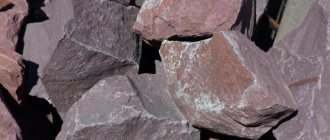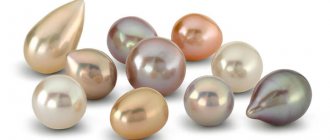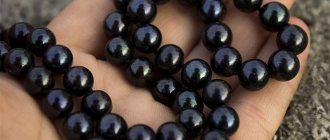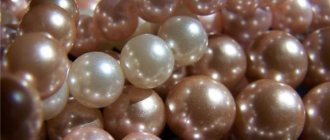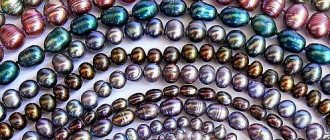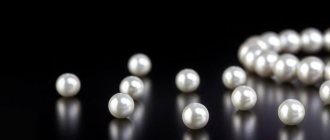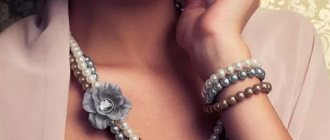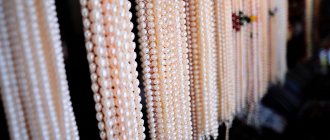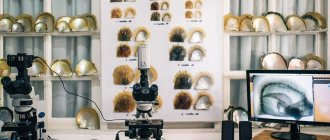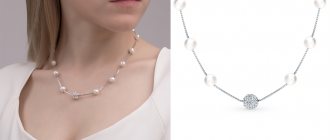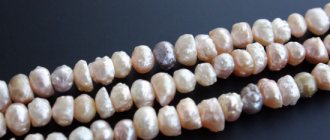Akoya pearls - what are they, how are they mined, what are the features of the gem? Let's talk about this in detail.
Pearls grown in pearl farms are traditionally called natural, despite the fact that the creation implies human intervention in the course of natural processes.
The leading position in terms of sales volume on the world market is occupied by Akoya sea pearls, created on farms located in Japan. Jewelry can have different shapes, sizes, and shades. All these factors form the final cost.
WHAT ARE AKOYA PEARLS
Akoya is a Japanese pearl grown in farms in the Land of the Rising Sun. A distinctive feature is the cultivation of pearls in sea waters.
Jewelry of marine origin is valued higher than that grown in fresh waters. The second creation option is common in China.
Sea pearls grown in Japan are distinguished by their large – up to 0.8 – 0.11 mm – sizes, regular shape, and pronounced shine.
Akoya pearls
According to statistics, akoya is most often used to create classic necklaces, which are highly valued in the jewelry industry.
The mollusk Pinctada fucata is used to grow pearls The process of growing and forming a jewel takes from 1 to 3 years.
Man-made akoya is identical to the natural mineral, since there is no difference between the ways the grain enters the oyster (naturally or through human efforts).
Main features of Akoya pearls
Akoya sea pearls are the most valuable in the jewelry market.
The high cost is explained by the following factors:
- Classic round shape. The correct shape is achieved by implanting a round hard ball into the shell. This method is traditional for creating Akoya pearls.
- Noble white or gray-blue color. Only Akoya sea pearls grown, including in artificially created conditions, have cool shades. A distinctive feature of the minerals is also called the presence of rare black pearls.
- Overflow. When purchasing pearl jewelry, it is especially important to pay attention to the characteristic rainbow tints. If they are absent, the gem has an even shade; it is artificial.
Classic round pearl shape
The cost of akoya is determined by the given characteristics, which are not standard for other types of pearls.
We recommend: HOW TO CLEAN AMBER
Gem cultivation
Among the factors that determine the final high cost of akoya pearls is the method of cultivation, the implementation of which requires significant efforts on the part of specialists.
The sizes of the mollusks in the shells of which the gems are grown are insignificant. A diameter of up to 7 cm allows you to place a maximum of 3 cores for seeding future jewelry.
Most often, experts practice seeding just one nucleus.
As for the freshwater cultivation option, due to the large size of the mollusks, this method allows seeding of up to thirty nuclei. Cultivation of freshwater gems is a simplified process, which makes its price affordable.
Noble white
Akoya saltwater pearls are sensitive to even minimal changes in environmental conditions. An increase or decrease in temperature and other factors have a negative impact on the process of gem formation, leading to a change in shape, shade, and size.
The value of pearls increases if the layer of nacre on it is thin, which manifests itself in the form of a dazzling shine. To achieve such results, the cultivation of mineral formations at low temperatures is required.
Pearls grown in the winter season traditionally have a higher cost.
On farms it is extremely rare, but still possible to find so-called “wild” pearls. Gems of this kind appear as a result of a small parasitic creature or grain of sand falling into the shell of a mollusk. Pearls grown in this way are completely natural, their formation is not controlled by human activity.
In addition to mature and fully formed Akoya pearls, shell shells and pearls in the early stages of development are also used to create jewelry.
Such products have a lower cost than gems, but also belong to the class of jewelry.
Akoya sea pearls
A brief history of obtaining pearls in industrial conditions
Stone cultivation was also carried out in China, but it was on Japanese farms that the first high-quality man-made pearls were obtained. The famous Akoya pearls are now offered to customers by the most fashionable jewelry houses:
- Mikimoto, Japan;
- Misaki, Kingdom of Monaco.
Jewelry with Japanese pearls can be purchased in large Russian chains Dame-gem, Maysaku, Pearl-shop and others. Unique shine, ideal shape, various shades: pink, golden, dazzling white, silver - have made Japanese cultured pearls extremely popular.
How did the Japanese Kokichi Mikimoto manage to recreate natural perfection with human hands? The creator of the industrial pearl cultivation system required incredible perseverance, patience and perseverance. The main stages of painstaking work:
- 1890, the first replantings were made;
- 1893 - Ume’s faithful wife and comrade-in-arms took out the first pearl obtained with the help of an implant from the shell; it was still imperfect, semicircular in shape.
- 1905, a “blood tide” of microscopic algae killed more than 850 thousand pearl mussels! The first round pearl, indistinguishable from its natural counterparts, was found in the dead shell.
Having created an entire empire, Mikimoto, the Pearl King, died at the age of 96, and was posthumously awarded the highest state title - “National Treasure”. A bas-relief of the scientist-inventor adorns the “Ten Great Inventors of Japan” exhibition at the main Patent Office.
FACTORS AFFECTING THE VALUE OF AKOYA PEARLS
Due to the popularity of Akoya pearls, the jewelry market is filled with fakes of varying quality. Unscrupulous sellers try to present cheap freshwater pearls with bright colors as sea pearls.
We recommend: PEARL MINING IN RUSSIA today
To avoid purchasing a fake, it is important to know what the features and characteristics of natural sea pearls are. The final value of Akoya pearls is determined by a number of parameters. The more the pearl corresponds to the given characteristics, the higher its value.
Color
The traditional colors for akoya are white, cream, golden, gray, and blue. Black and greenish-blue shades are extremely rare. Pearls endowed with such characteristics have a high cost, which is due to their small quantity on the jewelry market and the difficulties of cultivation. Unfortunately, it is not possible to initially set the correct shade for akoya.
Pearl shapes
Form
Pearls with a traditional spherical shape are highly valuable. It is called ideal for akoya. It is worth remembering that on the jewelry market you can also find irregular, oval-shaped pearls.
Surface and shine
The value of akoya lies in its strong shine. Other types of gems do not have similar characteristics.
Pearls that have an uneven shine, characterized as iridescent tints, are more expensive.
The uniform shine of akoya can be due to the artificial nature of pearls, for this reason its price is lower.
Origin
The final cost of a piece of jewelry is influenced by its method of origin.
It is extremely rare that pearls grown by a mollusk naturally, without human intervention, are mined on a farm.
Such pearls may have an irregular shape or color, but their price, regardless of the above factors, seems prohibitive to many.
Mother of pearl quality
Freshwater gems, despite their low price, are distinguished by their quality. Due to the thick layer of mother-of-pearl, they retain their appearance and characteristics for many years.
Mikimoto Pearl Shop
Thanks to Mikimoto's achievements, pearls became available to a wider audience. In 1899, the first specialty store selling cultured pearls opened in the fashionable shopping district of Ginza. It was he who laid the foundations of the modern jewelry industry in Japan.
But Mikimoto did not stop there. The active Japanese actively presented his goods at fairs and exhibitions around the world. For example, he exhibited a sample of cultured Akoya pearls at the 1893 World's Columbian Exposition in America. In 1937 he demonstrated the original obidome "Yaguruma" at the Paris World Exhibition. And for the 1939 World's Fair in New York, he made a replica of the Liberty Bell using pearls.
In 1927, Kokichi even visited Edison’s residence, where he was able to talk with the “world king of inventions.” They say that when he saw Mikimoto's pearls, Edison said: “There are only two things that I could not create in my laboratory. The first is a diamond, the second is a pearl. You have succeeded in inventing something that was considered biologically impossible - this is a real miracle."
For the Western world, "Mikimoto pearls" have become synonymous with Japanese culture as a whole. In 1913, the first foreign branch of Mikimoto was opened in London, and in 1916, a representative office was opened in Shanghai. Now the chain of stores is located in all major cities of the world, from Place Vendôme in Paris to Fifth Avenue in New York.
Marilyn Monroe wearing an Akoya Mikimoto pearl necklace (1954)
Modern breeding technology
Pearl culture technology continues to evolve to this day. The modern process begins with the cultivation of oysters in special man-made gardens. The Mikimoto company has two farms: in Mie and Fukuoka prefectures. A farm in Mie Prefecture cultivates shells that were bred specifically for the production of pearls. Akoya oysters, which exist in the wild, are grown in Fukuoka. Therefore, this farm is also dedicated to the conservation of species native to Japan.
The peculiarity of the original type of Fukuoka oysters is their amazing size and, accordingly, the ability to grow a large pearl. An important issue in shellfish farming is their nutrition. So phytoplankton, which is their main diet, is grown right there. It takes approximately two years to grow an adult oyster. The operation to introduce the nucleus is carried out manually, using instruments created on the basis of dental ones.
Then follows another year and a half of active work of the mollusk. At this time, every effort is made to create the most comfortable environment for him, protecting his health in every possible way. Poorly shaped pearls that cannot be used for jewelry will become material for cosmetics. The mollusks themselves, after harvesting, will be eaten or used to make fertilizers. Pearl production is essentially waste-free.
@official_mikimoto
How to distinguish natural pearls from cultured ones?
Natural and cultured pearls look the same, making it difficult to tell one from the other. A reliable way to differentiate is to control the internal structure. In real pearls it is concentrically shell-like, but in cultured pearls it is different, and different, depending on the nature of the core. This effect can be examined using X-ray diffraction.
The structure of a pearl reflects the many successive stages of its growth in the pearl sac. In addition to large-scale growth delays, seasonal stops occur, which lead to the formation of concentric layers that are easily visible to the naked eye or with a magnifying glass when examining the hole of drilled pearls.
In each thinnest layer, a thin membrane network of cells of organic material (conchiolin) is initially formed. Then it is filled with tiny crystals of aragonite in much the same way as individual hexagonal cells of wax honeycombs in a beehive are filled with honey. Formation of a pearl requires the formation of many thousands of overlapping films. The combined effect of thin translucent plates and their closely spaced overlapping layers determines the “play” of pearls and is very characteristic of natural pearls.
Natural pearls are characterized by small or no cores, while cultured pearls have a nacre core overlain by a flat or slightly curved layered structure.
Typically, the coating thickness of cultured pearls is 0.5 mm. Cultured pearls have a waxy sheen because the outer coating transmits light more than the substance of real pearls - oriental.
The holes in cultured pearls are usually larger in diameter than in natural pearls. Chips are often visible around the holes of cultured pearls, and a clear boundary between the shell and the core is also noticeable.
To determine the quality of pearls and evaluate them, diagnostic methods have been developed using various optical and X-ray devices, but their use requires great care and experience in interpreting the results in order to avoid errors.
Pearl jewelry from Maxim Demidov
Jewelry with cultured baroque pearls from Maxim Demidov amazes with the size of the stones and the variety of their shapes. The beauty of these products is truly immortal, although it requires special, careful handling in order to preserve their pearlescent luster and shimmer in their original form.
Earrings with pearls from Maxim Demidov became Bella Potemkina's choice for the red carpet at the Cannes Film Festival.
If you want to personally experience the magical appeal of pearls, then the Maxim Demidov jewelry catalog will help you.
More than just decoration
Pearls are unique. Unlike precious stones and metals, it cannot be shaped into the desired shape. He can only be the way nature created him - that is, the oyster. Like a diamond, it shines brightly in the sun, but even in dim light, due to its organic origin, it emits a soft glow. The jewelry art of the Mikimoto house consists of balancing these features.
“Beauty” is a universal concept. Kokichi Mikimoto dreamed of decorating the neck of every woman on this planet with a string of pearls. Today, the Japanese would be pleased: nowadays, jewelry made from cultured pearls is worn on all continents. And it is unlikely that they will ever cease to be a symbol of nobility and refined elegance. Thanks Kokichi and Coco.
Photo: Anthony Cotsifas for Mikimoto
